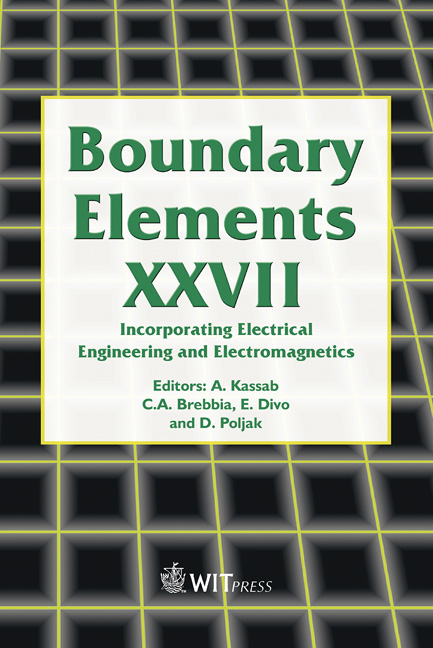A Spectral Boundary Element Method
Price
Free (open access)
Transaction
Volume
39
Pages
11
Published
2005
Size
666 kb
Paper DOI
10.2495/BE050161
Copyright
WIT Press
Author(s)
A. Calaon, R. Adey & J. Baynham
Abstract
The Boundary Element Method (BEM) is not local and generates a full and nonsymmetric matrix, therefore the matrix solution time could easily grow beyond acceptable limits. Furthermore, in many cases a decoupling between geometry description and solution approximationwould be advantageous and desirable. This work aims at offering the BEM a new approximation capability, which could reduce the number of degrees of freedom (dofs) needed, and at providing the desired decoupling. The method proposed here takes advantage of the less restrictive requirements in BEM compared with FEM for the field approximation. The base of the new approximation becomes what has been called \“Spectral Element” (SE): a super-entity gathering many elements, which are used only for geometry description and numerical integration. Spectral shape functions are generated using smooth positive definite compact supported Radial Basis Functions (RBF). The method was applied to linear elasticity in 3D and numerical tests were performed for different typical cases in order to highlight advantages, disadvantages and limits of the proposed methodology. 1 Approximation field in the BEM 1.1 Some general properties of the \“finite element approximation” Both BEM and FEM, in order to reduce the infinite dimensional space of the solution to a finite one, use the so called finite transform. If x represents the vector of space coordinates and u the approximation field, a set of \“generalised degrees of freedom” in the form of a vector α must be chosen so that: u(x) = A(x)α (1)
Keywords





